34 Photo Voice for Exploring Community Issues
“According to Wang and Burris, creators of the process, a Photovoice project should aim to: empower individuals to document and reflect on community assets and concerns, and invite critical dialogue and create knowledge about important community issues while using photographs as a medium for group discussion.” –Photo Voice
Purpose
Photo Voice was developed as a participatory action research method that encourages community citizens to explore their perceptions of different aspects of their lives through photography and narratives.
Learning Objectives
Participants will:
- Document aspects of their reality with photos or video.
- Discuss the personal significance of the chosen images.
- Write captions explaining the meaning of the images.
- Create a gallery event to share their findings and insights.
Here are two case studies of Photo Voice being used to explore community issues.
Case Study #1 Selkirk College, British Columbia, Canada, Classroom and Community Service Worker Students
Students from a CCSW class were exploring issues of diversity and inclusion on their campus and community. Their instructor assigned a photo voice project to examine their own experiences and then use the photos and narratives as launch pads for critical analysis of issues on campus. Students were asked to walk around the campus and take pictures that responded to the following question:
What has contributed to your sense of belonging or isolation as a Selkirk student?
Trying out this approach for themselves, gave the social service students another tool that they could use with community groups wanting to share their lived experience of assets and challenges. Class findings were displayed in the campus community area and throughout the week the photo-voice artists facilitated dialogues about “belonging and isolation” with other students, staff and faculty who passed by the display.
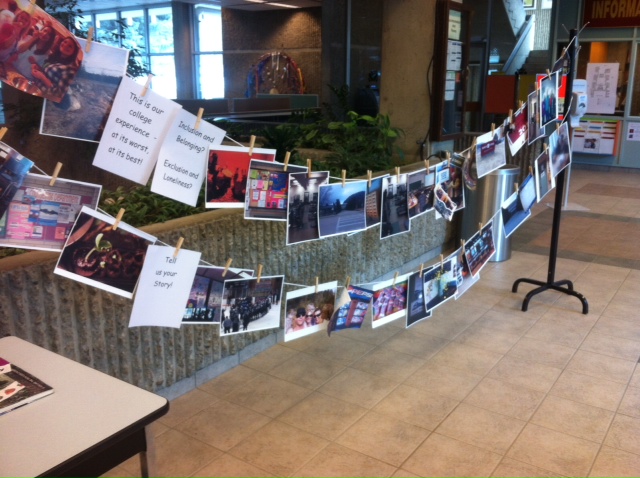
Follow-Up to Photo Voice Event
Following a photo-voice event, it is important for the group of citizen photographers to debrief the overall themes that were gathered and brainstorm next action steps that might address some of the concerns raised. For example, the follow-up to this photo voice exhibition, included dialogue about the campus assets and challenges and the group decided to present their findings to a Deans and Chairs management meeting. They proposed practical initiatives that could improve inclusion and belonging on campus.
Video Photo Voice
The Selkirk photo voice exploration was inspired by a workshop from educator and film maker Amy Bohigan.
Here is one of Amy’s videos that captures allows a group of youth to share their experiences of substance use.
Voices from the Margins: Photo Voice
Case Study #2 Youth Engagement Project, Khorog, Tajikistan
In the remote town of Khorog in Tajikistan, the Ismaili education committee was concerned about the behavior and mental health of their youth. We were approached to work with the highschool teachers, but decided that we would first get to know the teenagers in town and find out directly from them about their lives, hopes and challenges.
This youth engagement project unfolded over three months. We used various kinds of interactive activities with the highschool students, and the program culminated in a Photo Voice Exhibition where teachers and parents were invited to learn from the students about their experiences of being teenagers in Khorog.
Process for Photo Voice Youth Engagement Project in Rural Tajikistan
- Facilitators went to six high schools and met with twelve Grade 10 students at each school. We asked the principal to choose a diverse group of students that included students that were struggling and students that were thriving. We arrived early at the school to make a circle of chairs and we brought cookies and juice to each meeting.
- After some introductory icebreakers, we broke students into random groups of four and asked them to brainstorm and write down what they liked and didn’t like about being a teenager in Khorog.
- One week later these students were invited to campus for Saturday afternoon photo-voice sessions. University student leaders led a session on photography and how to to tell a story through pictures. High school participants were asked to take ten pictures over the next week that showed things that they liked and things they found challenging about being a teenager in their community.
- The following Saturday the teens came back to the campus and the University student leaders each mentored a group of three students. They looked together at their photos and discussed what each image meant to them. The small group helped each teen to decide on five photos were the best images to illustrate their experiences. The mentors helped the students to print the photos and create narrative captions.
- On the third Saturday afternoon the teens arrived with their parents and teachers. While the university student mentors helped the Khorog high school students to mount their exhibition, the counselor and student life advisor facilitated a workshop on adolescent development and relationship building with the parents and educators.
- Parents, educators and community leaders walked through the photo gallery talking to the youth about their photographs and their perceptions of Khorog.
- In a final debriefing, both teens and the adult guest shared some of the main themes that had emerged from the photo voice exploration and brainstormed some possible actions that could make life better for youth in Khorog.
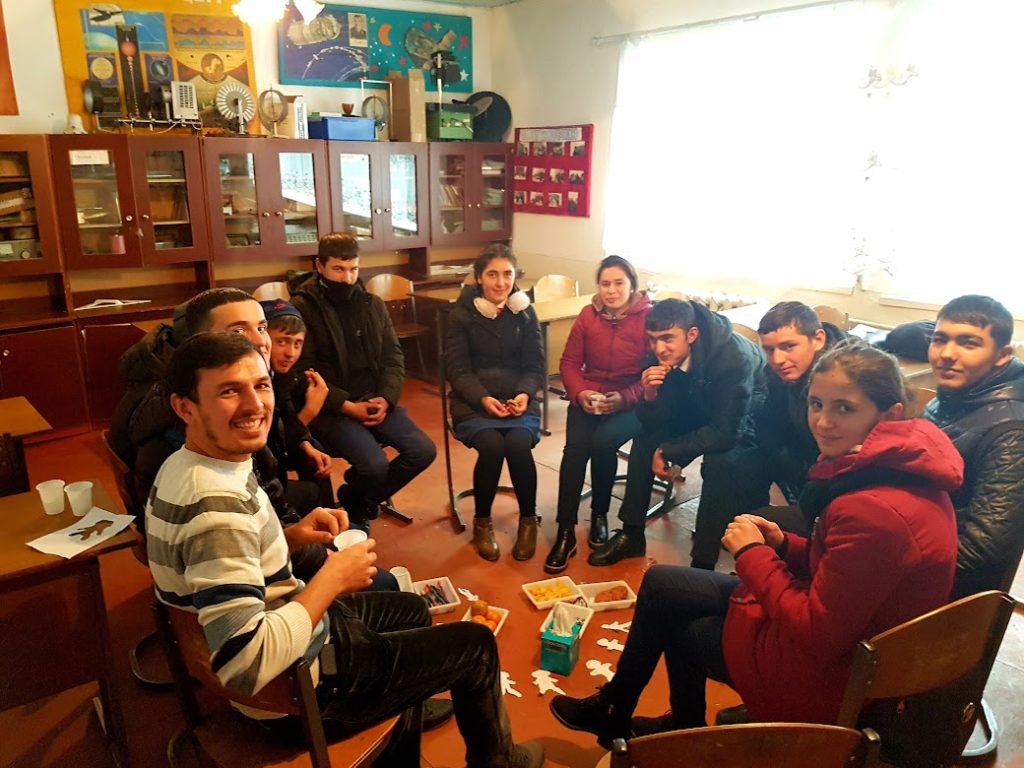
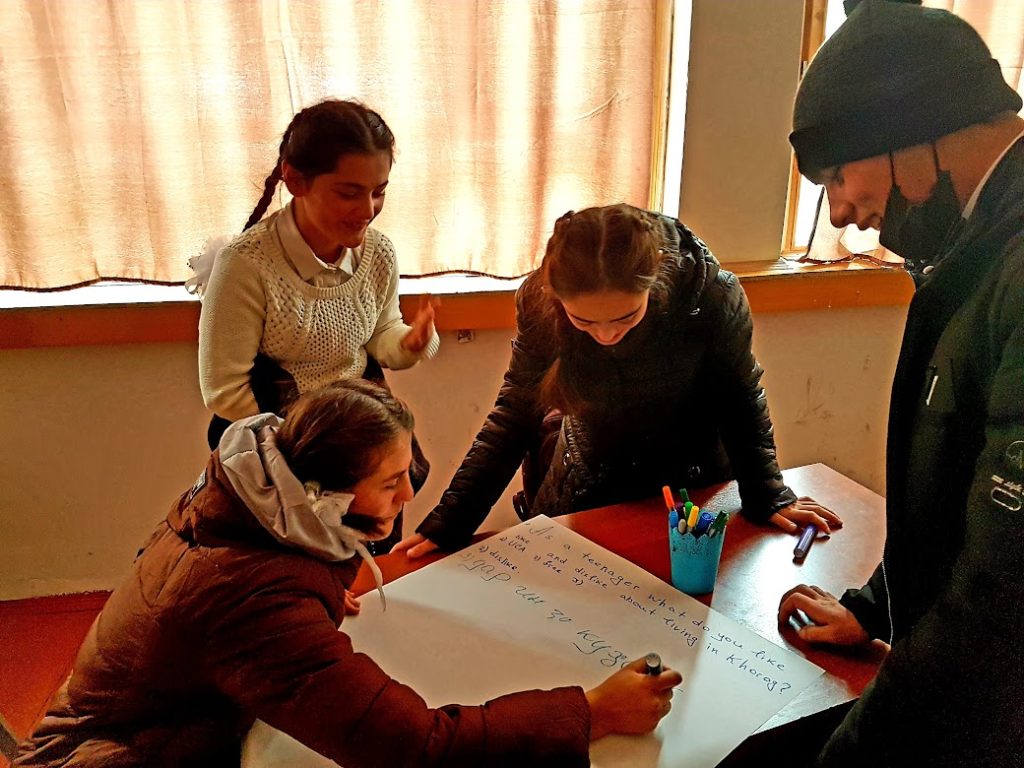
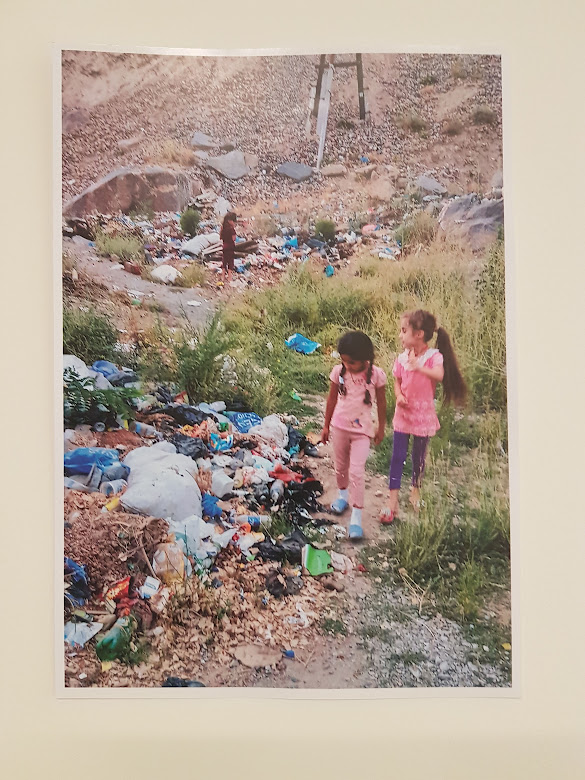
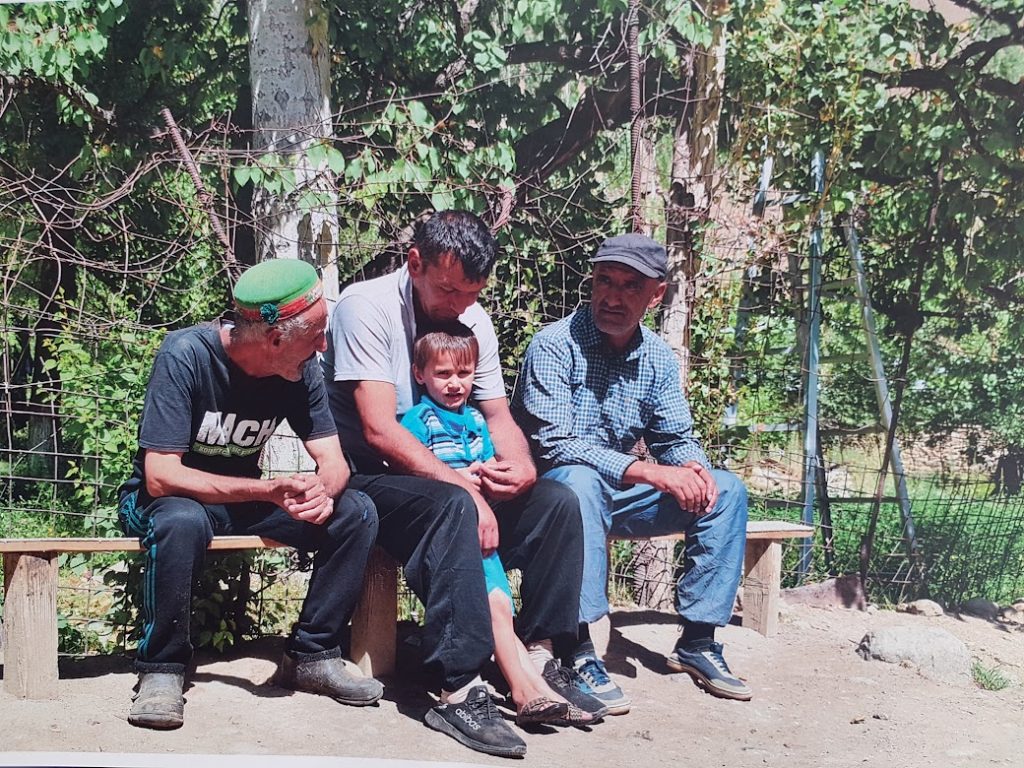
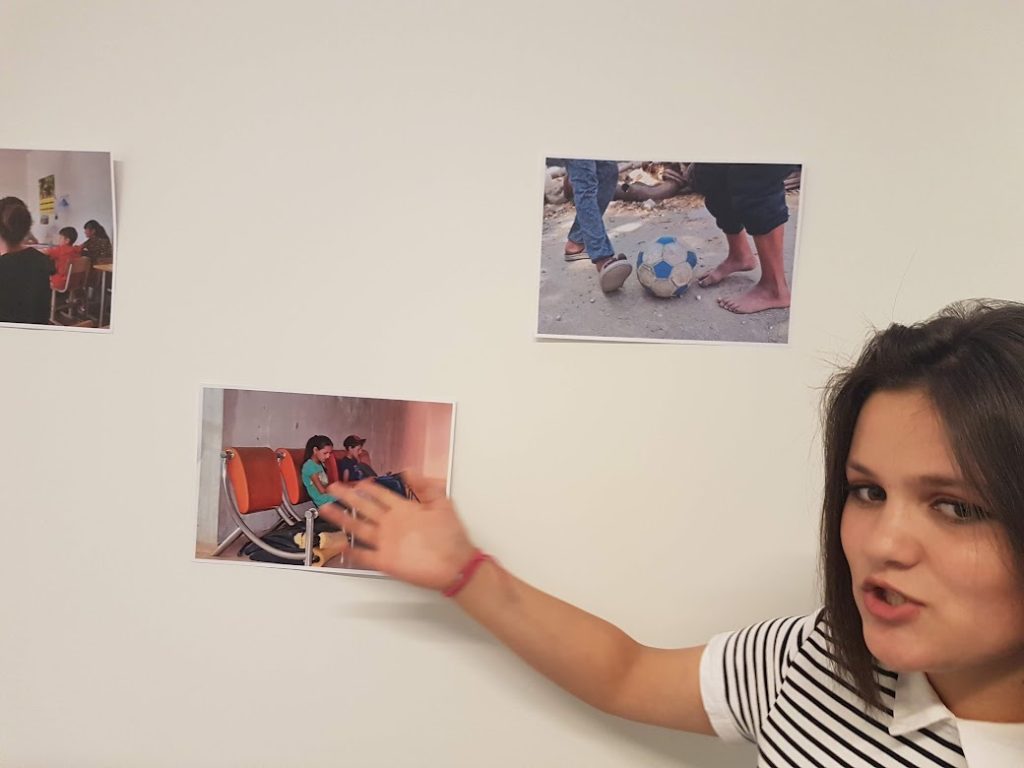
Resources and Materials
- cell phone cameras
- printer to print out photos
- plain paper and pens to write narrative captions
- clothes line and clothes pegs to hang pictures and captions
- invitations to faculty, management and community leaders to come view the exhibit and engage in conversations with the student research/photographers
- themes collected, action items generated and shared with decision-makers
